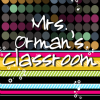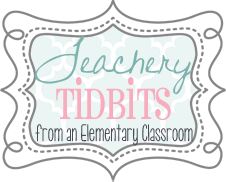1. The purpose of the National Education Technology Plan (NETP) is to increase the number of college graduates who holds a two-year or four-year degree from around 41 percent to 60 percent by the year 2020. This will close the gap on the number of students who graduate from high school ready to succeed in college and in their careers.
I think that this goal puts a lot of pressure on teachers and students, however it is possible. Yes, this is a 20 percent increase - but there is still time to reach that goal. I think that these numbers may be scary to teachers and students and be a real wake up call, but it is needed. In order for America to continue and to be successful, our future depends on these children and what we as educators are teaching them.
2. Main Assumptions:
- Many of the failings of our education system stem from our failure to engage the hearts and minds of students.
- What students need to learn and what we know about how they learn have changed, and therefore the learning experiences we provide should change.
- How we assess learning focuses too much on what has been learned after the fact and not enough on improving learning in the moment.
- We miss a huge opportunity to improve our entire education system when we gather student-learning data in silos and fail to integrate the information and make it broadly available to decision-makers at all levels of our education system—individual educators, schools, districts, states, and the federal government.
- Learning depends on effective teaching, and we need to focus on extended teams of connected educators with different roles who collaborate within schools and across time and distance and who use technology resources and tools to augment human talent.
- Effective teaching is an outcome of preparing and continually training teachers and leaders to guide the type of learning we want in our schools.
- Making engaging learning experiences and resources available to all learners anytime and anywhere requires state-of-the-art infrastructure, which includes technology, people, and processes that ensure continuous access.
- Education can learn much from such industries as business and entertainment about leveraging technology to continuously improve learning outcomes while increasing the productivity of our education system at all levels.
- Just as in health, energy, and defense, the federal government has an important role to play in funding and coordinating some of the R&D challenges associated with leveraging technology to ensure the maximum opportunity to learn.
I think that many educators may take offense to the first assumption, because it may be taken as educators are not doing their “job” and teaching children effectively. Administrators may also take on this same feeling in that they are not running the district appropriately when they feel they may be doing the best they can. I think that some of these assumptions do seem harsh, unless you focus on the big picture of things. Students may feel like they are failing because their work is giving the school or district a bad score. However, in all aspects, change can only come from within - and it is up to everyone to make a difference. Administrators, teachers, and students need to work together to make a better learning experience.
3. Five Essential Areas
1.0 Learning: Engage and Empower
All learners will have engaging and empowering learning experiences both in and out of school that prepare them to be active, creative, knowledgeable, and ethical participants in our globally networked society.
2.0 Assessment: Measure What Matters
Our education system at all levels will leverage the power of technology to measure what matters and use assessment data for continuous improvement.
3.0 Teaching: Prepare and Connect
Professional educators will be supported individually and in teams by technology that connects them to data, content, resources, expertise, and learning experiences that enable and inspire more effective teaching for all learners.
4.0 Infrastructure: Access and Enable
All students and educators will have access to a comprehensive infrastructure for learning when and where they need it.
5.0 Productivity: Redesign and Transform
Our education system at all levels will redesign processes and structures to take advantage of the power of technology to improve learning outcomes while making more efficient use of time, money, and staff.
The 21st century competencies are critical thinking, complex problem solving, collaboration, and multimedia communication. While students are using these real-world tools, they are learning and given opportunities that will allow them to deal with real-world problems and they will be prepared for the real world. These competencies will allow student to be productive members in a competitive workplace.
4. The State of Ohio’s Education Technology Plan aligns with the National Education Technology Plan by incorporating more technology in and outside of the classroom, building an infrastructure that will help the success of students and educators, and better preparing students for college and the real world. They big difference in which they are not aligned is that the State of Ohio Plan does not involve as much government input as the National Education Technology Plan details.
5. The two plans are aligned by incorporating more multimedia and broadcasting, more technology in and out of the classroom, incorporating federal programs, and expanding the data system. The difference is that the State of Ohio’s Education Technology Plan focuses on virtual learning, and the NETP does not gear as much towards that area.
6. I think that these measurements put a lot of pressure of educators and students when the expectations seems out of reach/not possible. It is hard to access the “number of students” in some areas. There may not be student who want to take college credits at the same time as high school, or AP courses. Some students may not want to take distance learning courses, or on-line courses. How can you base number on something that may be simply a student preference or not? That may be a hard “goal” to reach given that student preferences will be different.











No comments:
Post a Comment